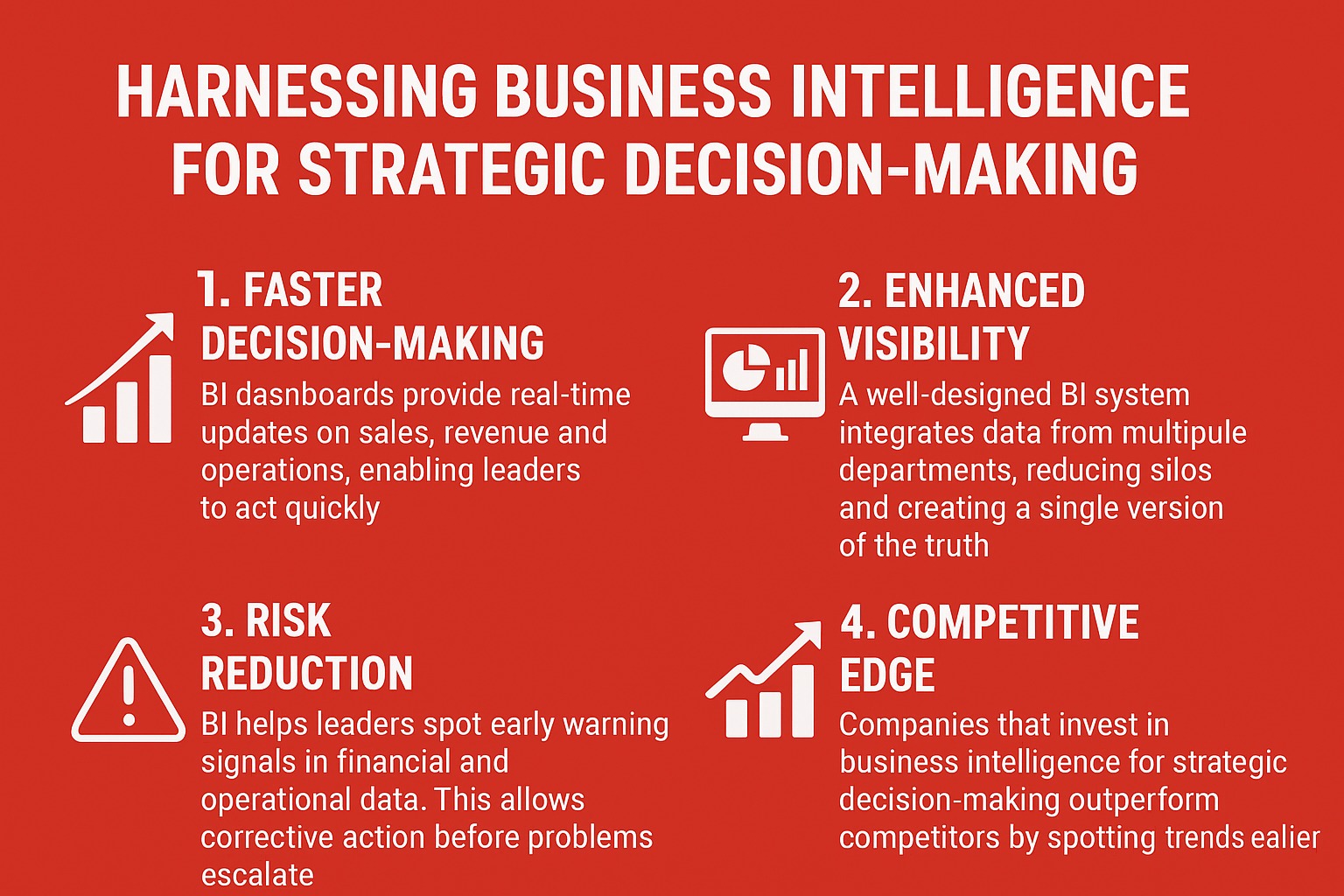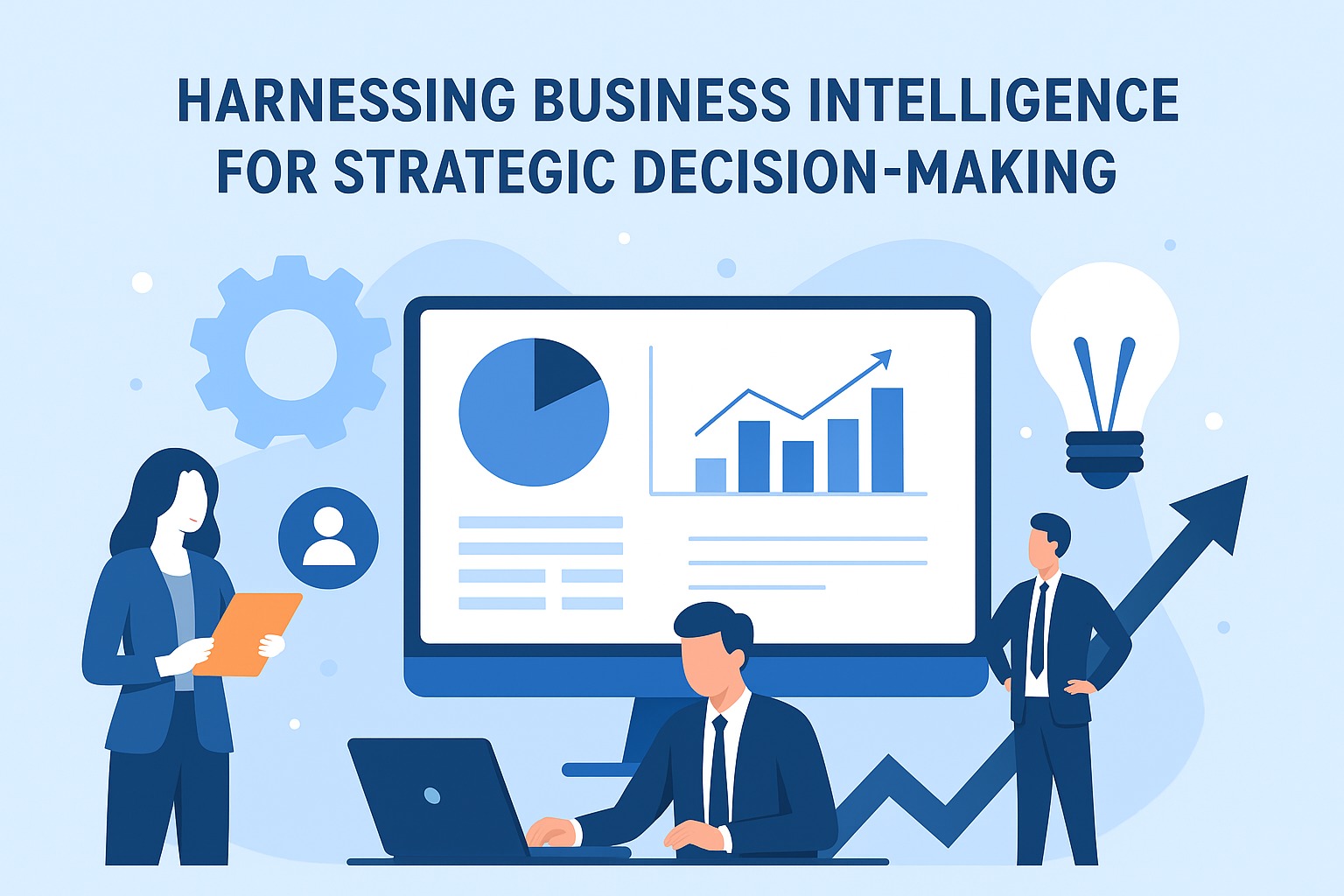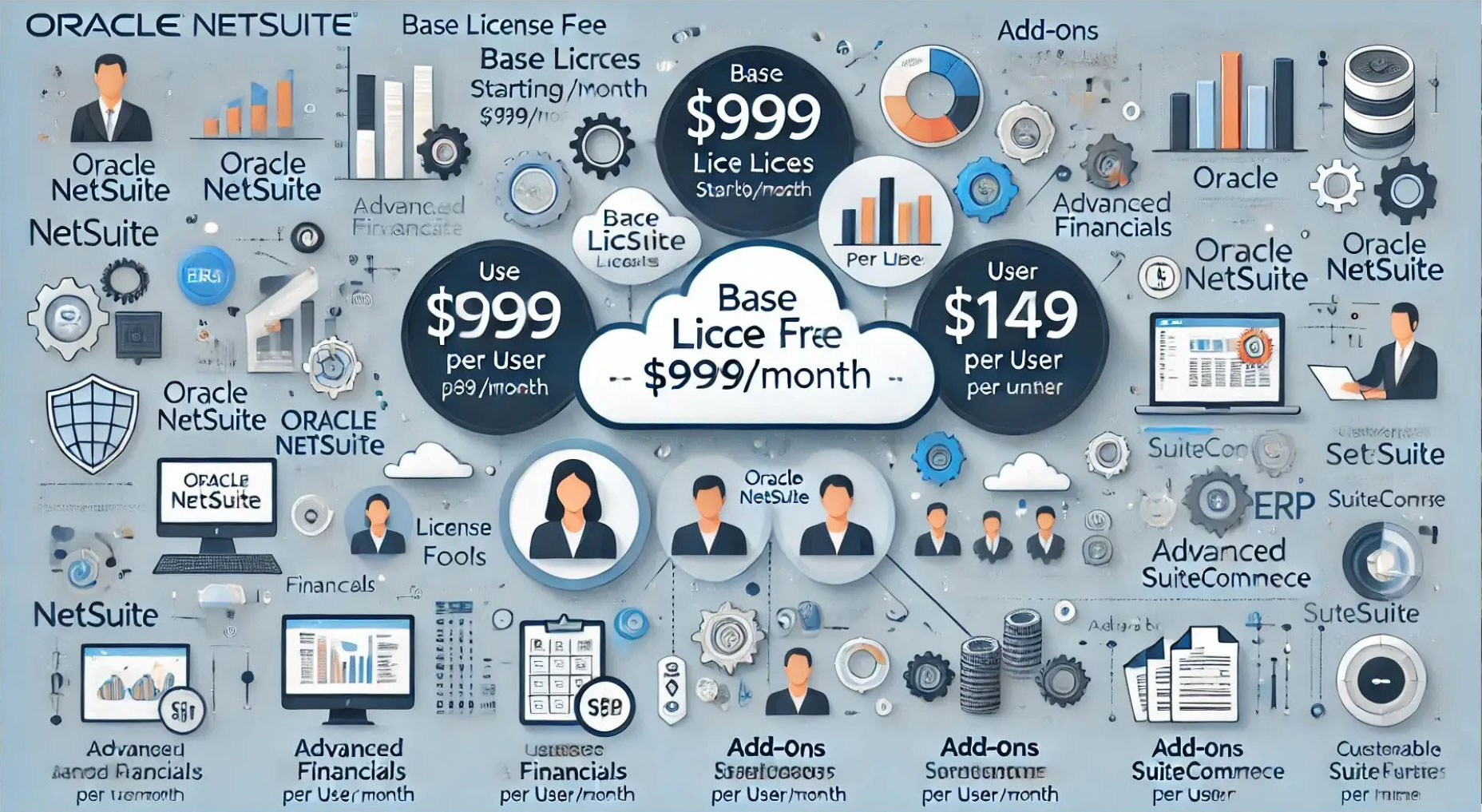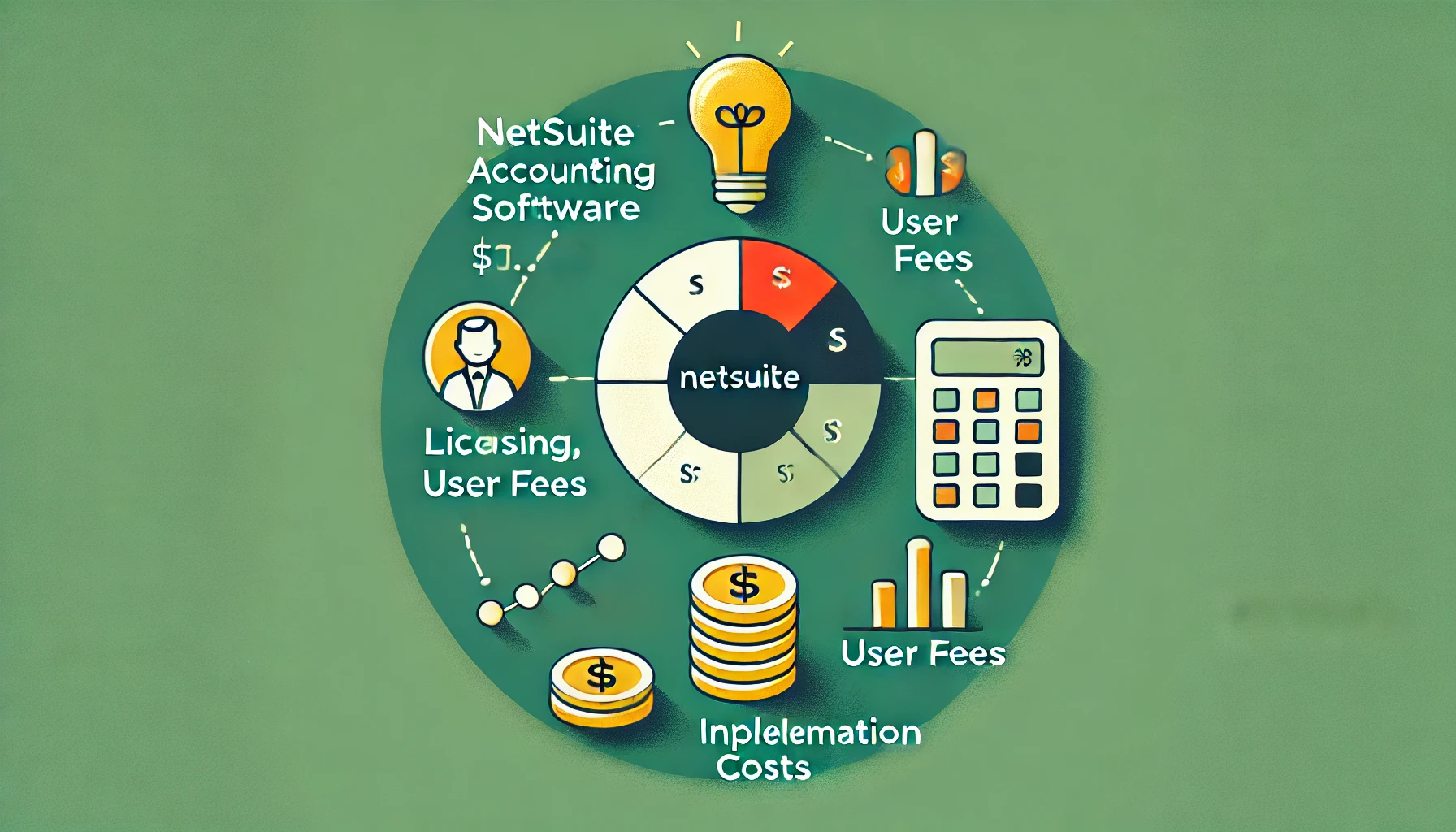In today’s fast-paced business environment, data has become the most valuable asset for any organization. Companies generate information from sales, finance, operations and customer interactions every second. Yet data by itself does not drive value unless leaders convert it into insights. This is where harnessing business intelligence for strategic decision-making becomes crucial.
Business Intelligence (BI) empowers organizations to transform raw data into meaningful insights. With BI tools, leaders make informed choices, reduce risks and uncover growth opportunities. This blog outlines how companies can implement BI effectively, the best practices to follow and the benefits it brings to strategy and execution.
Table of Contents
ToggleWhy Business Intelligence Matters for Strategic Decisions
1- Faster decision-making: BI dashboards provide real-time updates on sales, revenue and operations, enabling leaders to act quickly.
2- Enhanced visibility: A well-designed BI system integrates data from multiple departments, reducing silos and creating a single version of the truth.
3- Risk reduction: BI helps leaders spot early warning signals in financial and operational data. This allows corrective action before problems escalate.
4- Competitive edge: Companies that invest in business intelligence for strategic decision-making outperform competitors by spotting trends earlier.
Organizations that rely only on instinct often miss opportunities or respond too late. BI bridges this gap by grounding every strategic move in evidence.
Building Blocks of Business Intelligence
A successful BI strategy rests on certain building blocks. These ensure that data is collected, processed and presented in a way that supports decision-making.
1- Data integration: BI systems pull information from ERP, CRM and external sources into one centralized repository.
2- Data accuracy: Clean and reliable data ensures that dashboards and reports reflect reality. Without this, decisions may be flawed.
3- Visualization tools: Modern BI platforms use charts, heat maps and drill-down reports to make insights accessible to non-technical users.
4- Self-service analytics: Empowering employees with BI tools encourages faster decisions without waiting for IT teams.
When these components are in place, companies can fully harness business intelligence to guide strategy.

Best Practices for Harnessing BI
Simply installing a BI platform does not guarantee results. Companies must follow best practices to maximize value.
1- Align BI with strategy: Define the business objectives first. For example, improving supply chain efficiency or optimizing marketing campaigns. Then configure BI to track progress against those goals.
2- Focus on data governance: Establish standards for data collection, storage and usage. Strong governance reduces duplication and ensures compliance.
3- Encourage adoption: Train teams to use BI dashboards daily. Adoption improves when employees see how BI simplifies their work.
4- Iterative improvement: BI should evolve with business needs. Regularly update KPIs, dashboards and data sources to stay relevant.
These business intelligence best practices help ensure that BI systems remain useful and aligned with long-term objectives.
Role of BI in Strategic Planning
Strategic planning requires accurate forecasting and a deep understanding of trends. BI systems provide the data foundation for long-term planning.
1- Market analysis: BI platforms combine internal sales data with external market intelligence to highlight new opportunities.
2- Financial forecasting: By analyzing revenue streams, BI supports accurate projections and budget allocations.
3- Customer behavior insights: Companies can spot changing customer preferences and adjust product or service offerings.
4- Operational efficiency: Data on production cycles, supply chain delays and workforce performance guides resource planning.
Incorporating business intelligence in strategic planning strengthens an organization’s ability to stay ahead of market shifts.
Overcoming Challenges in BI Adoption
Despite its advantages, many companies struggle with BI adoption. Identifying and addressing challenges early makes implementation smoother.
1- Data silos: Without integration, BI cannot deliver a complete view. Breaking down silos is critical.
2- Resistance to change: Employees may resist BI adoption if they do not understand its value. Clear communication and training are essential.
3- Complexity of tools: Some BI systems overwhelm users. Selecting intuitive tools ensures better adoption.
4- Cost concerns: Leaders must see BI as an investment, not an expense, given its long-term benefits.
By addressing these issues, businesses can unlock the full potential of business intelligence for decision-making.
Using BI for Performance Measurement
BI tools provide metrics that measure whether strategies succeed. This allows leaders to refine decisions and adjust execution in real time.
1- Key performance indicators (KPIs): Dashboards track progress against goals such as revenue growth or cost reduction.
2- Benchmarking: BI compares company performance against industry standards to identify areas for improvement.
3- Scenario analysis: Leaders can test multiple scenarios, such as market expansion or price changes, before committing.
4- Predictive analytics: BI not only measures past performance but also predicts future outcomes.
Performance measurement ensures that business intelligence tools for decision-making continue to create tangible value.
The Future of Business Intelligence
The next generation of BI is more advanced and integrated with AI and machine learning. Organizations that prepare now will gain even greater advantages.
1- AI-powered insights: Machine learning identifies patterns in data that humans may overlook.
2- Natural language queries: Users can ask questions in plain language instead of writing queries.
3- Embedded BI: Analytics will become part of daily workflows inside ERP and CRM systems.
4- Predictive decision-making: Instead of reacting to data, leaders will anticipate trends and act proactively.
The future of harnessing business intelligence for strategic decision-making is about moving from descriptive reporting to predictive and prescriptive insights.
Conclusion
In today’s competitive world, strategic decisions must be supported by accurate insights. By harnessing business intelligence for strategic decision-making, companies achieve faster decision-making, reduce risks and drive growth.
The key lies in aligning BI with strategy, ensuring data accuracy and encouraging adoption across teams. When implemented effectively, BI systems transform raw data into a powerful resource that drives long-term success.
As technology evolves, BI will integrate more closely with AI and automation, helping leaders make not just smarter but also faster and more predictive decisions. Businesses that embrace BI today will be the ones defining industry standards tomorrow.




